✨ Welcome Back to My ShellsWorld Work Station
Aloha everyone!!! If you’re new to my blog, welcome to my ShellsWorld — I’m so happy you’re here! I hope your day is starting with joy and a big smile. For my returning readers, welcome back to my little work station — it’s always full of fun, laughter, and a whole lot happening on my table.
Are you ready to join me today and follow along with my new creation? Let’s begin.
When Your Fingers Ask for a Break
Today, though, my fingers finally called for a break. They’re red and tender, a little bruised beneath the skin from poking Kahelelani shells from Niʻihau. My skin even began to crack — no matter how many layers of lotion or cream I tried, nothing could hold it together.
So there I was, doing a little sanding (yes, sanding — I know, it sounds ridiculous lol), watching those tiny marks start to show, and I just had to laugh. It’s all part of the job, right? That was the moment I knew it was time to give my fingers a well-earned rest ☕.
Still, even when my hands beg for mercy, my mind refuses to rest. Ideas keep swirling like the ocean waves. I can’t help myself — I find my way back to my shell boxes, reaching for my Kauaʻi shells instead ❤️.
The Gentle Beauty of Kauaʻi Shells
Kauaʻi shells are often a little more forgiving when it comes to poking. They don’t fight you the way Niʻihau shells sometimes do, and that gentleness feels like a gift when your hands need a break.
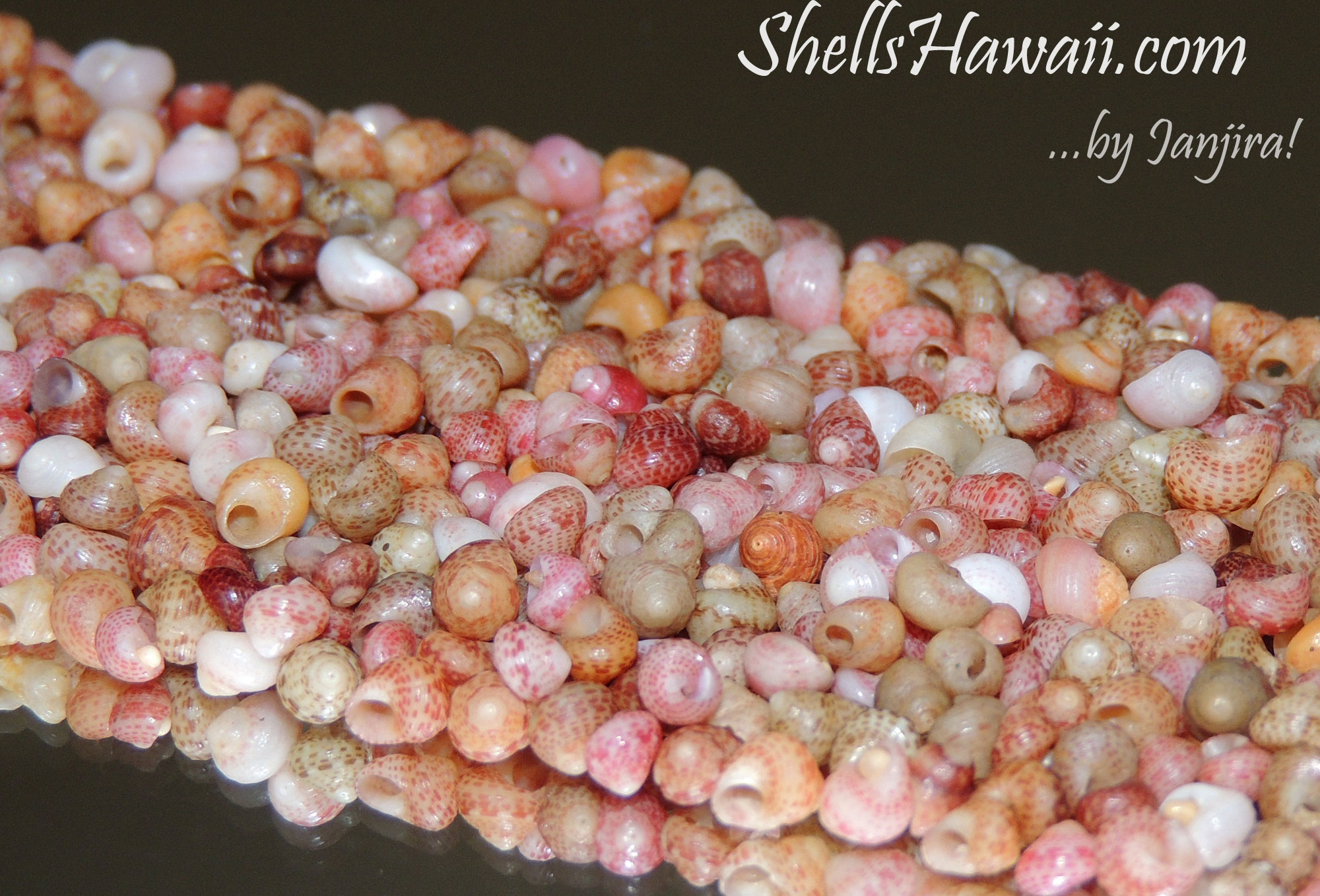
They may not always have the same deep, natural luster or the most vibrant hues as the shells from Niʻihau, but they carry their own kind of quiet grace ✨. Many of the beaches where we collect them still keep their treasures safe — shells that Mr. Sand hasn’t claimed as his home.
Each one feels like a small blessing, a tiny moment of calm that reminds me why I love this work so much. There’s something peaceful about knowing that even in their simplicity, these shells hold their own beauty and spirit of aloha ?.
Beginning a New Creation
So today, I decided to create a new two-strand Poepoe-style shell lei. I’ve sold out every lei I’ve made in this design using Kahelelani shells from Kauaʻi, and with the holiday season right around the corner, it feels like the perfect time to begin again.
This time, I’m using very large size-15 Kahelelani shells — bold, rare, and full of character — with a Tahitian pearl resting at the center like a calm heart. The moment I saw these shells, I knew they would become something special. They shine softly, each one with its own little personality, and somehow they all seem to whisper, “We’re ready.”
✨ Finding the Rhythm — The Challenge of Patience Behind the Work
Large shells bring their own challenges. Matching colors, balancing shape, and managing string tension all become part of the dance. Every inch of this process asks for patience, precision, and quiet focus — the kind of steady rhythm a true shokunin (職人, craftsman) learns only through years of experience.
But it’s not just me who needs patience — the shells themselves have their own long journey before they ever reach this point. For a Kahelelani to grow into a large, mature shell with full color, it takes time — years of surviving the ocean’s rhythm. They live among currents, rocks, and coral. Some never make it, taken by predators or broken by the waves before their colors can fully form.
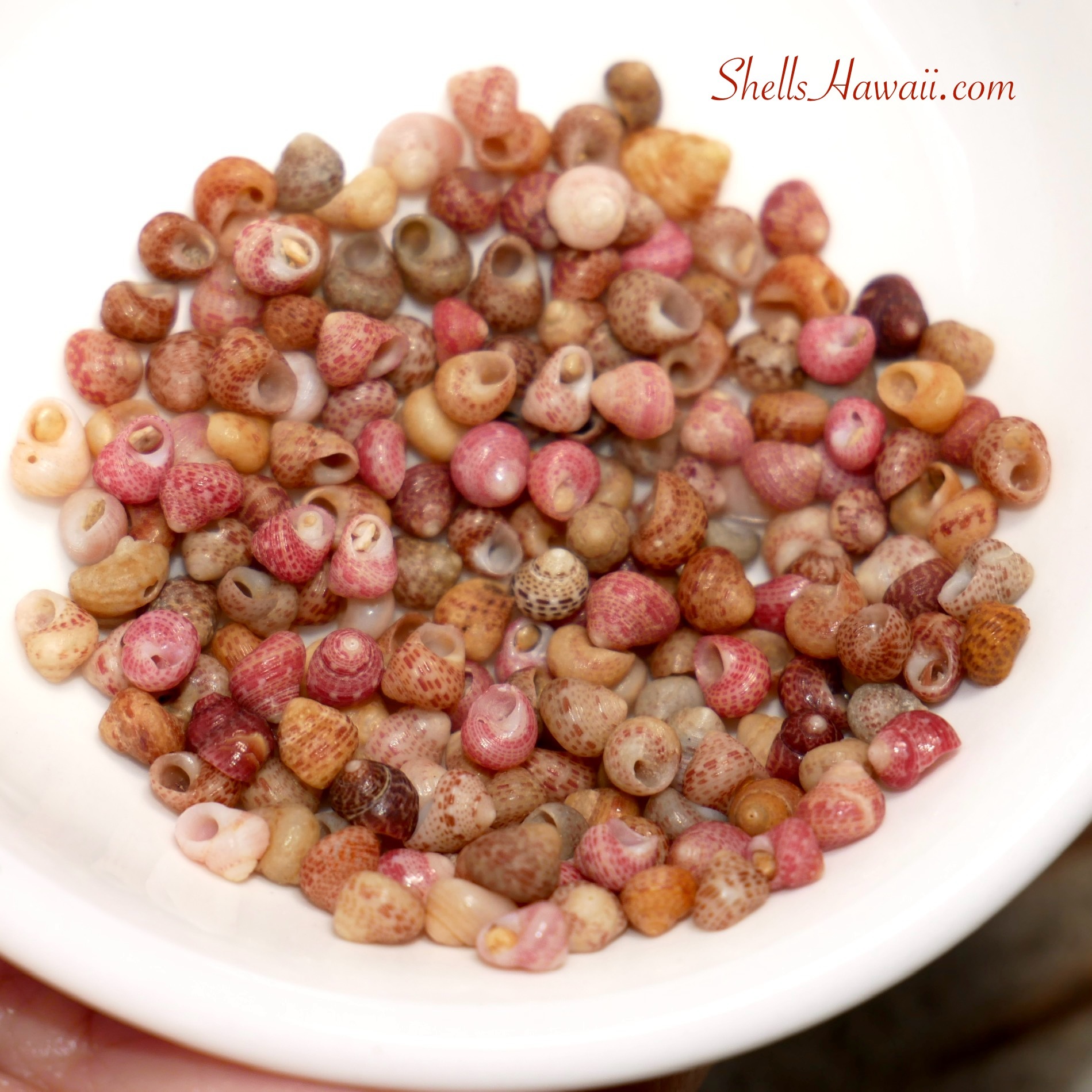
Because of this, finding larger size shells is very rare — and finding them in perfect condition is even harder. Each one that survives carries both strength and fragility, and when I finally find them, it feels like discovering a small treasure gifted by the sea.
And even then, the challenge doesn’t end there. During prepping, stringing, and weaving, you’ll break some shells — it’s almost unavoidable. That’s what makes this design so difficult to create. It requires shells in perfect condition to achieve the beautiful, even twist that makes the Poepoe lei truly shine. ✨
When the Lei Starts to Twist Back at You
One of the biggest challenges when creating any lei — especially a two-strand Poepoe — is the length of the string. Each shell must travel all the way through to reach the working end. Every pass wears the thread a little, making it softer and more fragile.
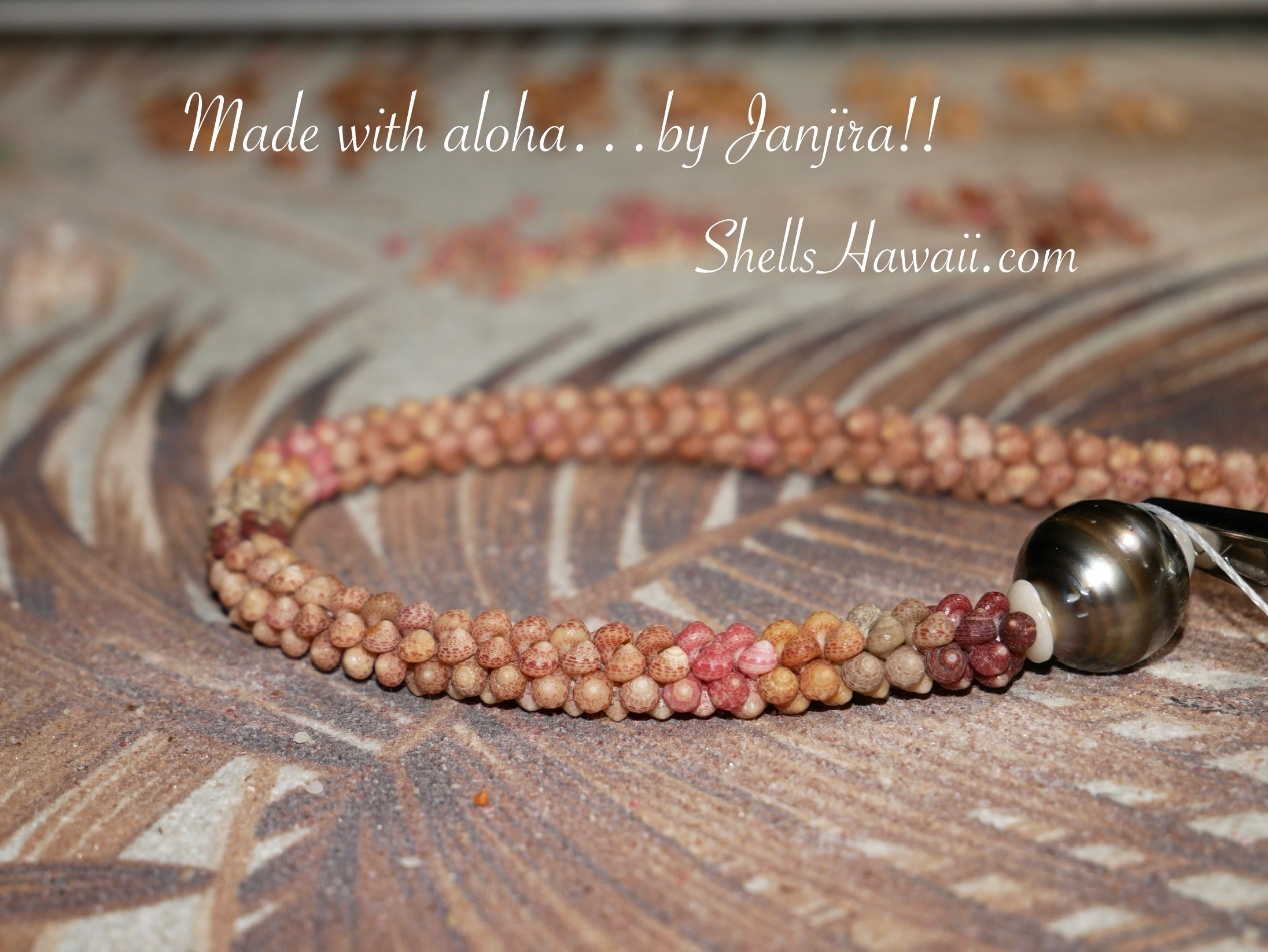
Once half the lei is finished and you begin the other half, the completed section starts to twist and shift as you weave. Handle it like a tiny bird — gentle hands, steady breath ✨. One quick twist and a shell could break. If that happens, there’s no easy fix. A single cracked shell can mean unstringing or starting over — hours gone in a blink.
And yet, this is the part that teaches me to slow down and trust my rhythm. The sighs, the tiny victories, the stubborn determination — the camera never captures those moments ❤️.
✨ Lessons from the Poepoe Style
Over the years, I’ve learned that how you begin makes all the difference. Many people pair up their shells, add all of them into the strings, and then start tying — but in my experience, that only makes things harder.
Once you have shells sitting on the string, they flop around, get in your way, and each one must pass through the loop as you tie. It sounds faster, but it creates more frustration.
Keep it easy. Pair and line up your shells on the table, then add one at a time as you tie. You’ll have more control, better rhythm, and less tangling.
If you’re a beginner, start simple. There’s already plenty happening — twisting, spacing, holding threads evenly. The two-strand Poepoe demands precision: no cracks, no chips, and shells in a section must be exactly the same size. Otherwise, you’ll end up with uneven twists and gaps that are hard to fix later.
Have a good supply so you can replace anything that’s “almost” right. Don’t rush, don’t force — let the shells guide you. When both strands finally turn in harmony, it’s pure joy ✨.
⚖️ Finding the Right Balance — My 20–25 Shell Method
Over time, I’ve found that adding about 20–25 shells per string in each section is the sweet spot. As you twist and weave, shells naturally want to wander; too many at once makes them harder to control.
You’ll be adding more shells anyway, so why invite frustration? I learned this the hard way — trial, error, and a lot of patience. No one taught me these little tips. It took me a long, long time to get it right.
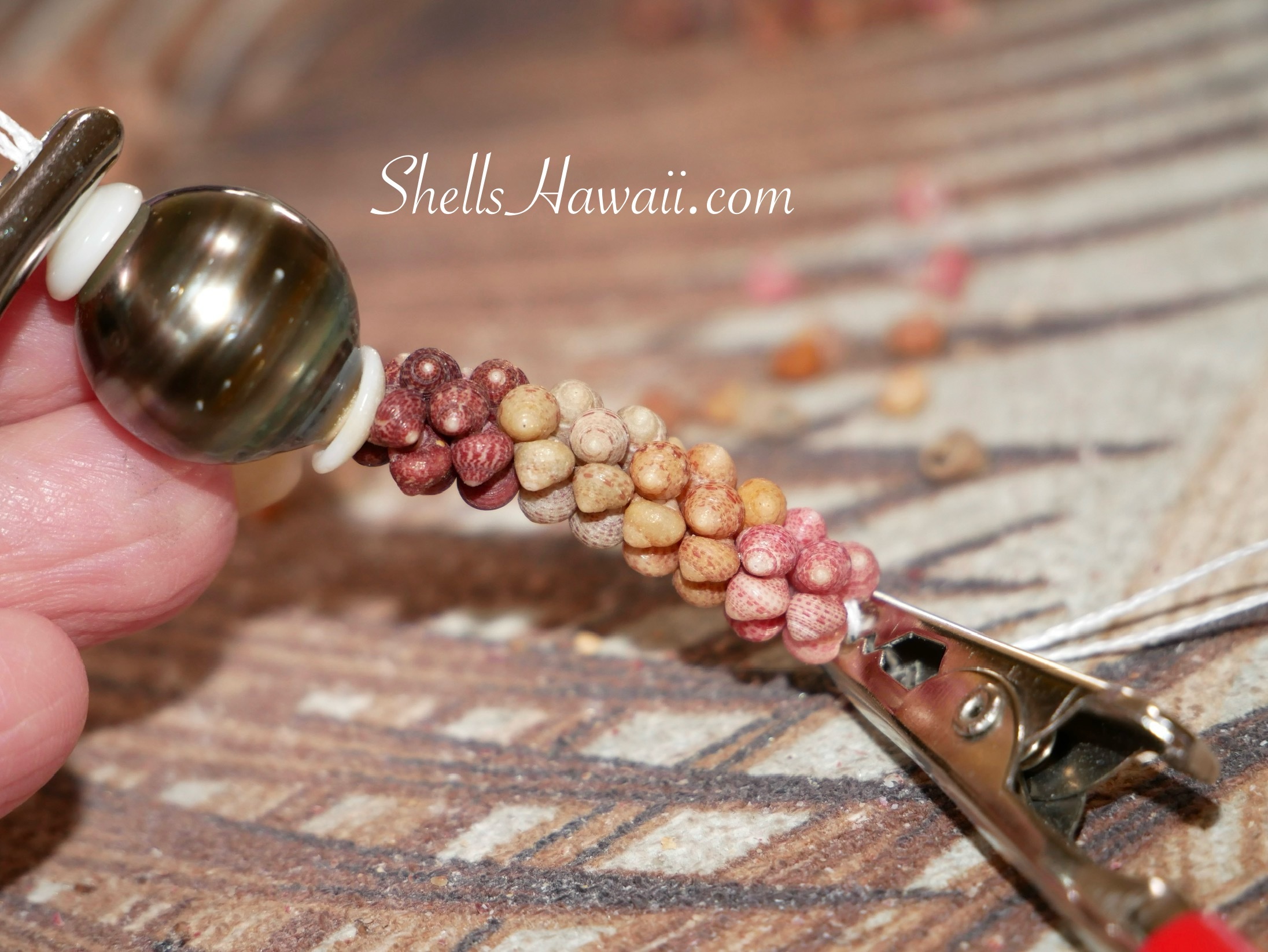
When I first tried this design, it took me on and off for at least four years. I’d sit 12 hours a day doing the same thing until it nearly drove me crazy (haha). I’d put it away for months, come back… and nope — still didn’t work.
This knowledge didn’t come overnight. Seeing something or reading directions doesn’t mean it clicks right away. It takes patience and thousands of hours. The real question is: where do you want to be, and how much time and effort will you invest to do it right?
Many stop about one-third of the way and call it good. If you’ve wondered why this style is rare — now you know ✨. If you see something that almost looks like this but turns into a different design — now you know why, too ❤️.
I share this knowledge — and my aloha — hoping it guides you. If it helps, please write to me. I’d love to hear from you. (Contact Janjira)
The Challenge of Shell Sizes and Fragile Beauty
I began this lei from the middle, right beside the Tahitian pearl — just in case I needed to shift shell sizes later if I didn’t have enough of one size. Finding large size-15 Kahelelani in matching colors is hard. Honestly, I gave myself a little headache with this challenge — but I love it, haha.
The first half started beautifully: shells lined up, twisting smooth, everything promising. It felt like smooth sailing — wouldn’t that be nice? But nope, nope, nope.
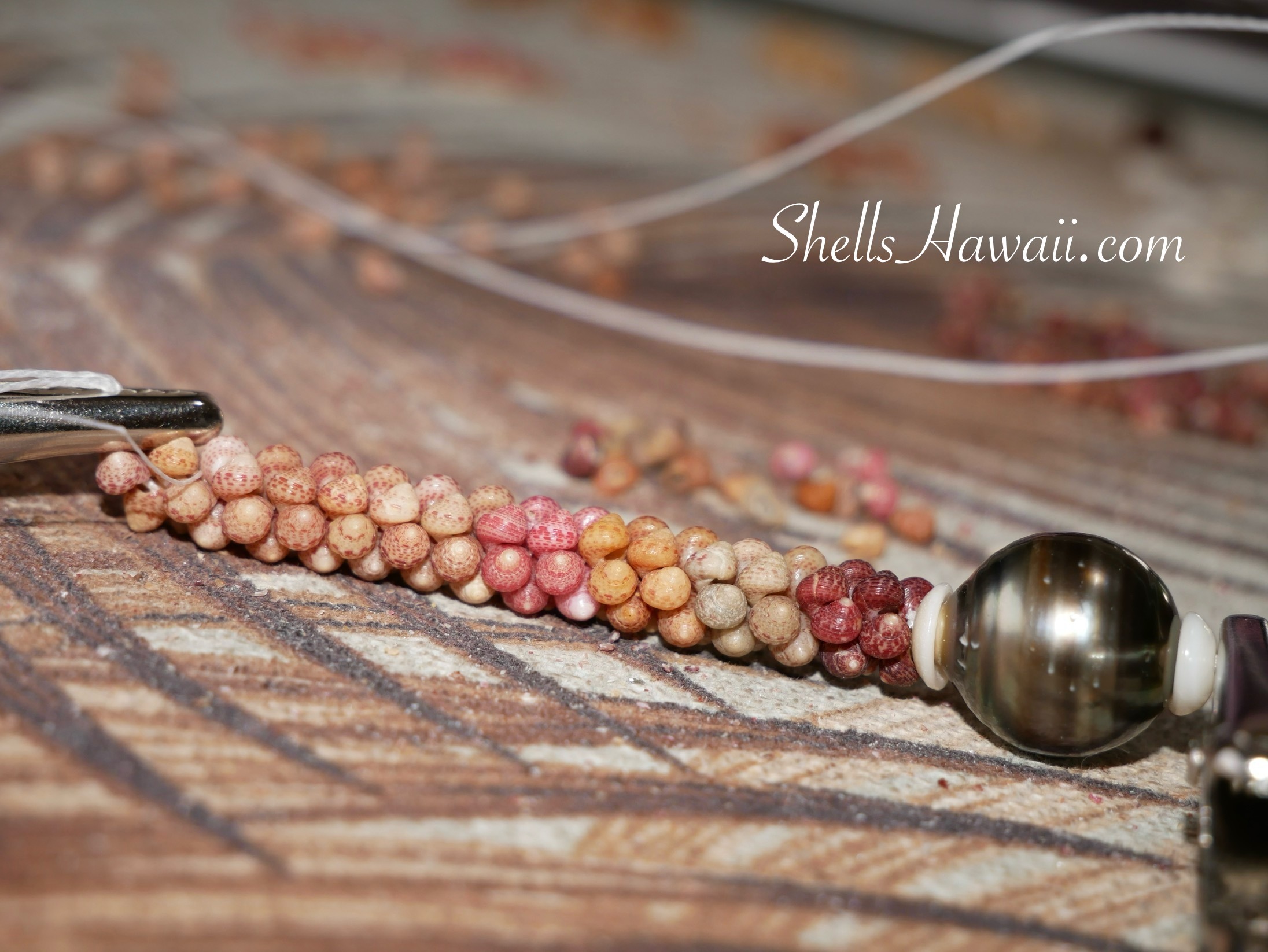
The row began to shift sideways. That means somewhere a shell is slightly larger and pushing the line off. I peeked — nothing. I used my fingers, running up and down to feel a tiny bump — still nothing. “Okay, which shell is it?”
Finally, I found the last shell that kept the row straight — a perfect A-grade. I didn’t want to touch it… but I had to break it off. After a careful re-twist, the line was straight again. Crisis solved.
Then I kept going — double-check and triple-check every time. Do not rush. After each section, count and write down how many shells you used and how many rows the twist became — that note saves you when you start the second half.
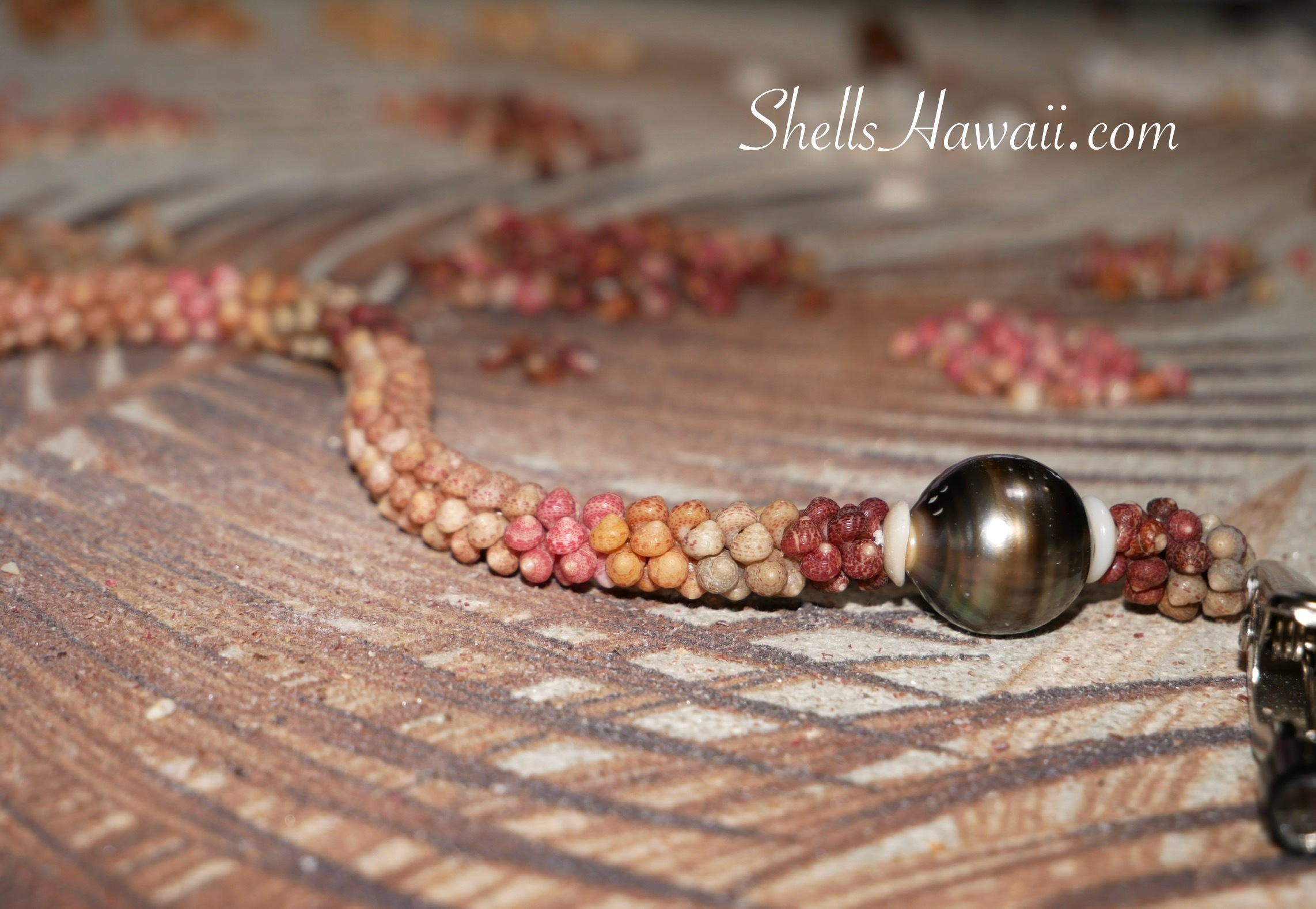
Everything was going great until — oop — I ran out of one color. Hunting time, lol. I went through my shells, revisiting old favorites, and finally found what I needed. More sorting, more poking, more stringing, twisting, and weaving. The first half finished beautifully, and I was happy. Take the win ❤️ — because the next part is coming.
✨ The Second Half — Where the Real Challenge Begins
Here’s the hidden truth: the finished first half becomes part of your workspace. It’s always in the way while you twist and turn the second half. Move slowly and check, double-check, triple-check. With the second half, make sure each new section has the exact same quantity as the last.
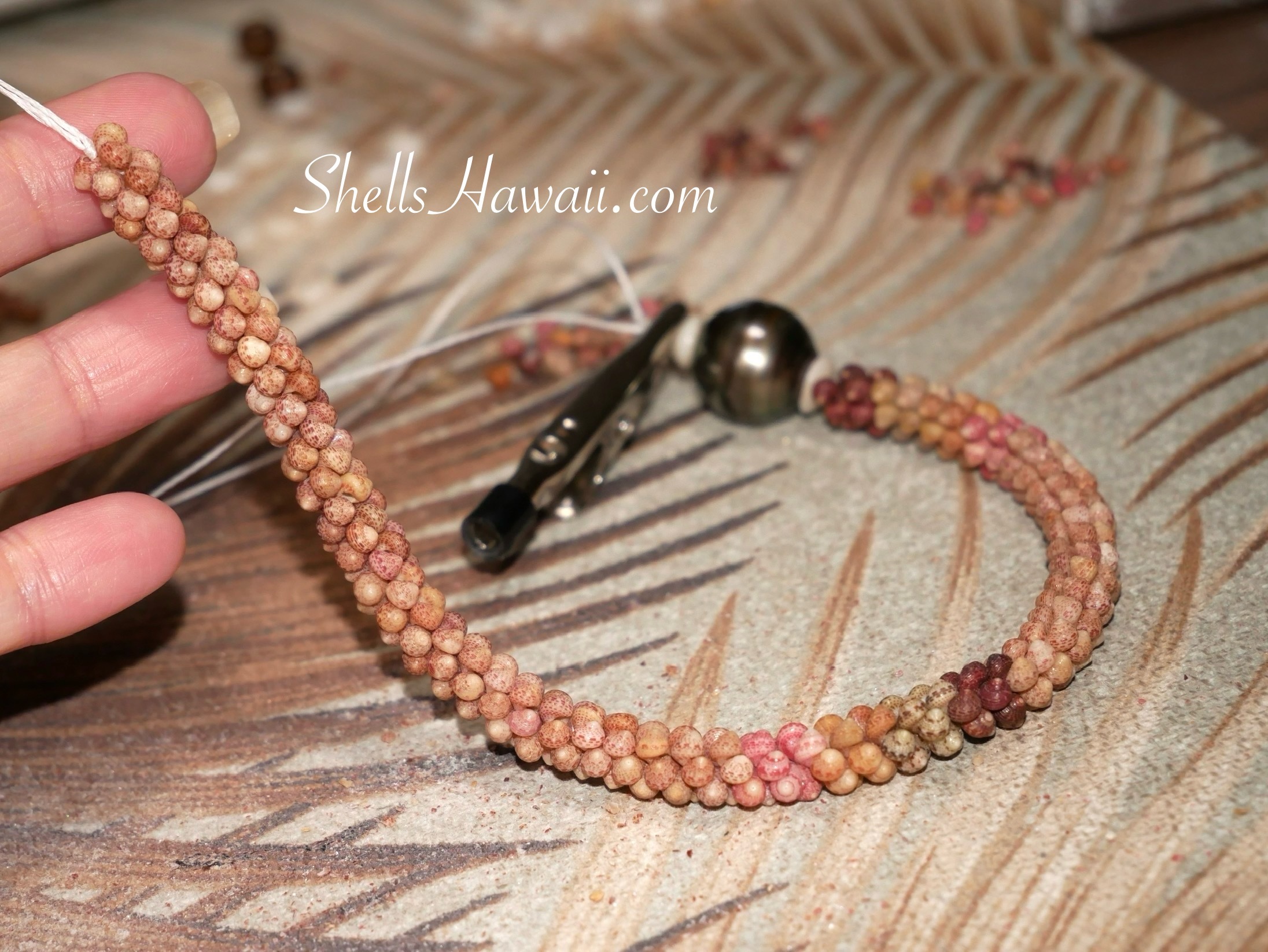
Counting Kahelelani shells takes a little more patience than Momi. Momi shells are larger, and once the pattern starts to appear, counting rows feels easy. But Kahelelani… oh, they’re tiny. You count as you twist, holding your breath and hoping they behave. And sometimes, when one breaks — and trust me, it happens — you have to start counting again before moving on.
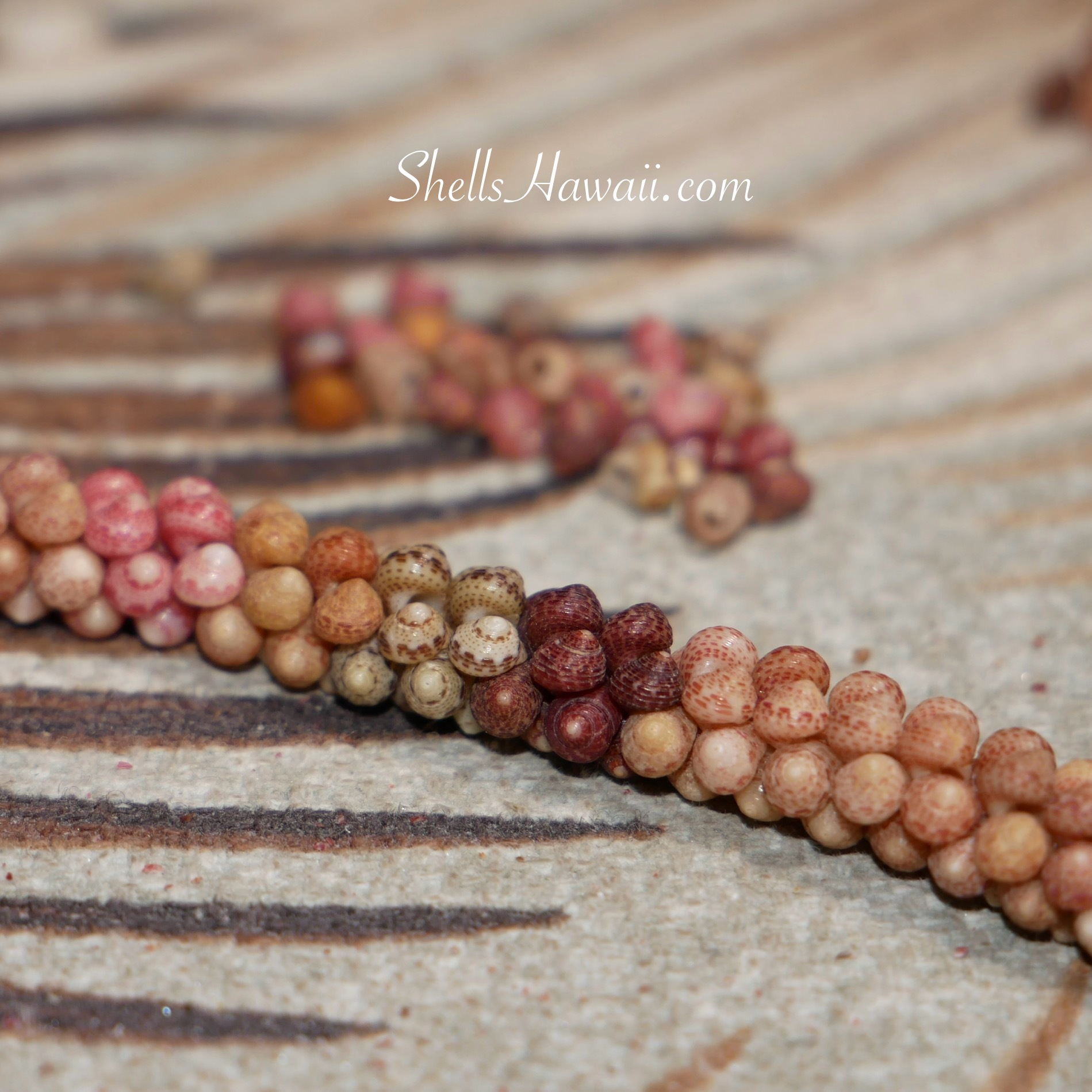
It’s one of those gentle lessons in slowing down. Every little detail matters, and after a while, you begin to feel like the shells are guiding you — quietly reminding you, “Don’t rush, we’ll get there together.” That’s the beauty of this kind of work ✨.
Right away, sizes were uneven — and this time it was a color section. Not only size, but some shells had uneven waha (mouths), so they sat funny and wouldn’t twist neatly. I broke them off, added new ones, twisted again — still not right.
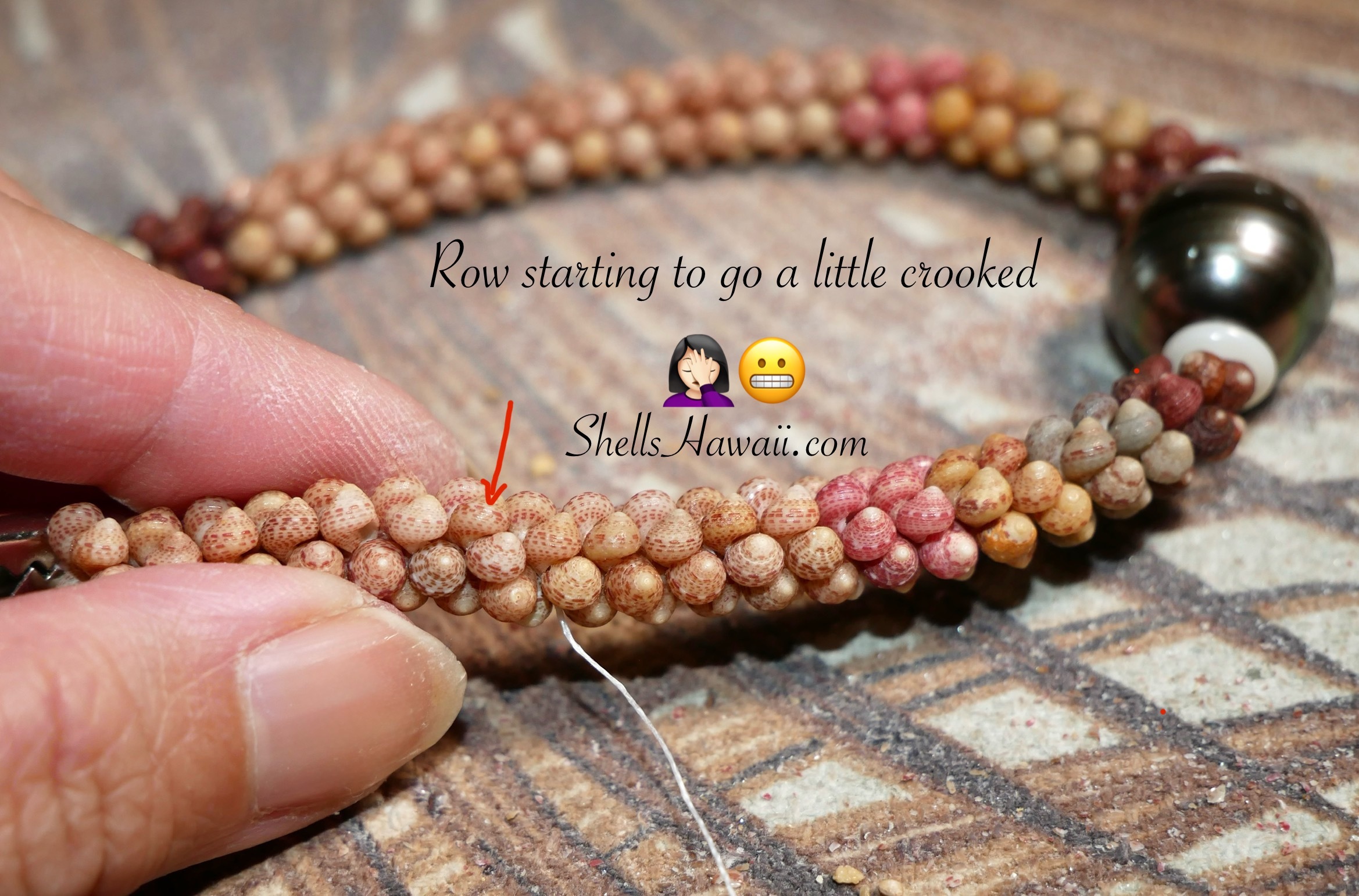
I added, removed, and added new shells again — continuing to prep each one carefully for the next section. I usually re-size about five different times before I’m satisfied. You can feel when a shell is just a little too big the moment you pick it up.
Just because you’ve used a sizing tool doesn’t mean everything’s perfect — that tool can only take you so far. You still need your eyes and your feeling. I always lay three or four shells on my finger before letting them slide down the string. If one looks even slightly bigger, replace it right there. Don’t let it pass — or you’ll be breaking it off later, and trust me, that’s never fun.
I thought I did every step — and nope! Around the two-inch mark, the natural brown Kahelelani gave me fits. The row wouldn’t sit straight. I broke about five shells and still couldn’t spot the troublemaker. I was upset. I put on music, stepped away five minutes, drank some water, came back, and looked again — slower this time.

Deep breath. Look closer. Feel every shell.
After about twenty minutes on that section, I found it — one tiny shell just slightly off. No one else would notice, but when you’re weaving, you feel it right away. I removed it and the row went straight again.
✨ Back in Rhythm — When the Shells Forgive You
After that little battle, I finally fell back into rhythm. The twist felt smoother, the tension relaxed, and my hands moved almost on their own. When the lei starts to take its true shape — soft, full, perfectly balanced — all that frustration melts away. That’s the quiet joy of monozukuri — the spirit of craft and heart working together.
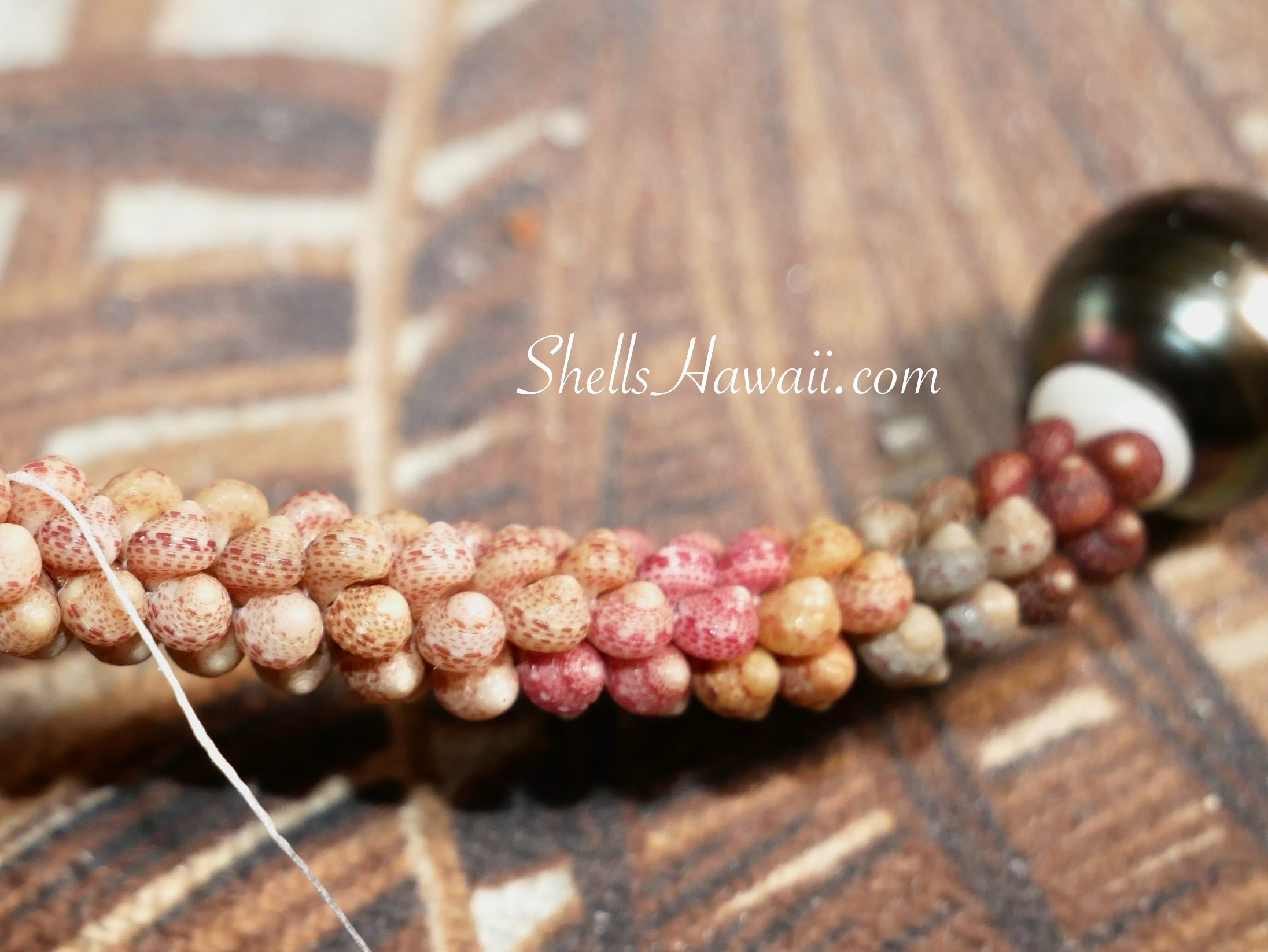
✨ The Final Stretch — Every Lei Has Its Own Story
When I finally reached the end of the string, a wave of relief and pride arrived together. The two halves came together perfectly — balanced, smooth, full of life.
Finally, the lei has come together. Check, double-check, triple-check again to be sure everything is balanced before you finish your weaving. I never add the clasp right away — why? Because you need a break.
Walk away. Enjoy what you just accomplished.
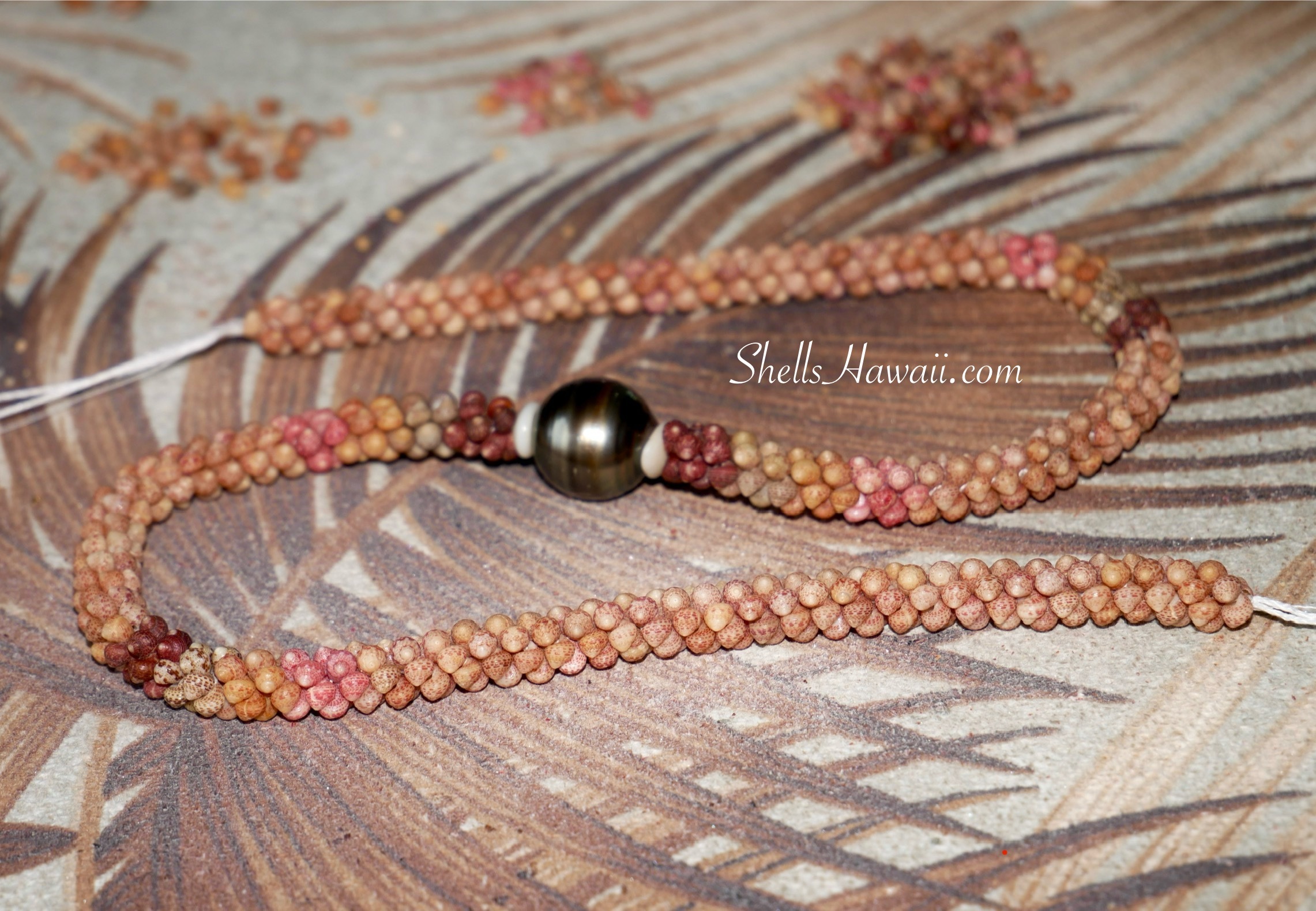
Adding the clasp is the final step, and it’s just as important. Do it right. One mistake here can undo all your work. So take your time. Don’t rush. Everyone wants to finish, but over the years I’ve learned to slow down and appreciate what I’ve just accomplished before moving to the next piece.
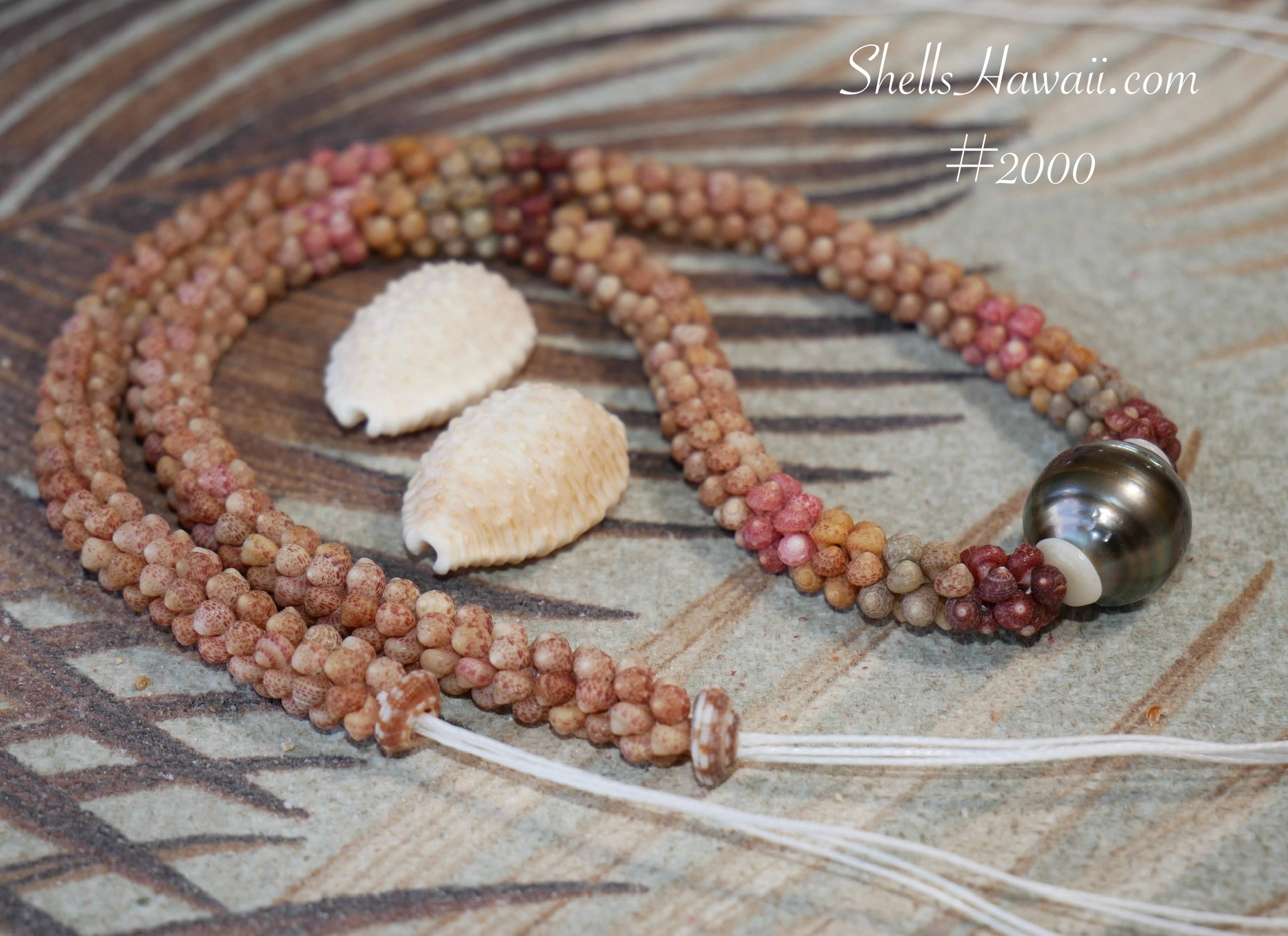
This is one creation in my Poepoe journey. Every piece I make becomes its own new story, and this one — Lei #2000 — carries a journey of patience, care, and quiet determination.
If this lei finds a new home, I hope you will love and cherish it even more after learning how it was created. Its journey was a long one — from the sea, through many hours of careful work, to finally becoming this beautiful treasure.
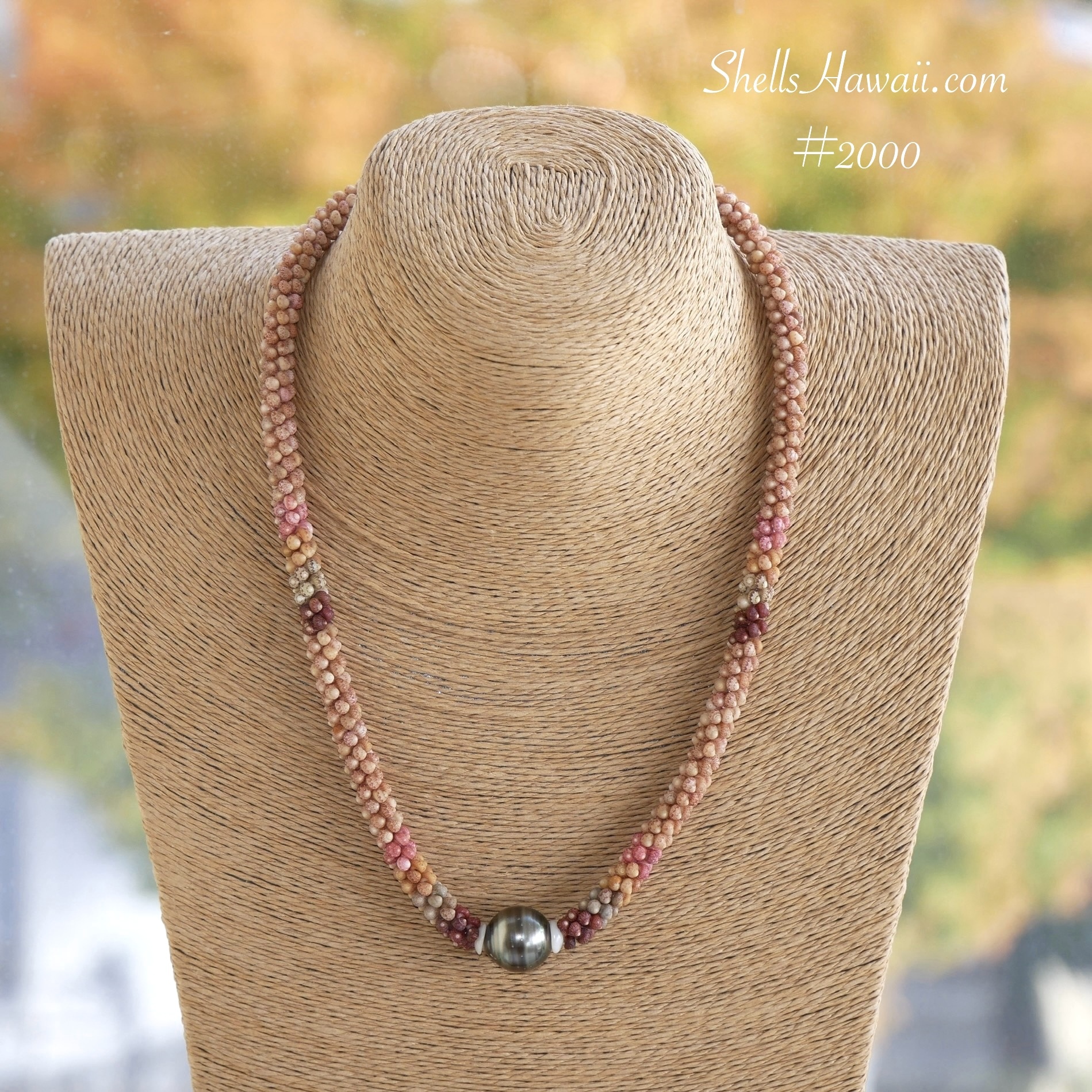
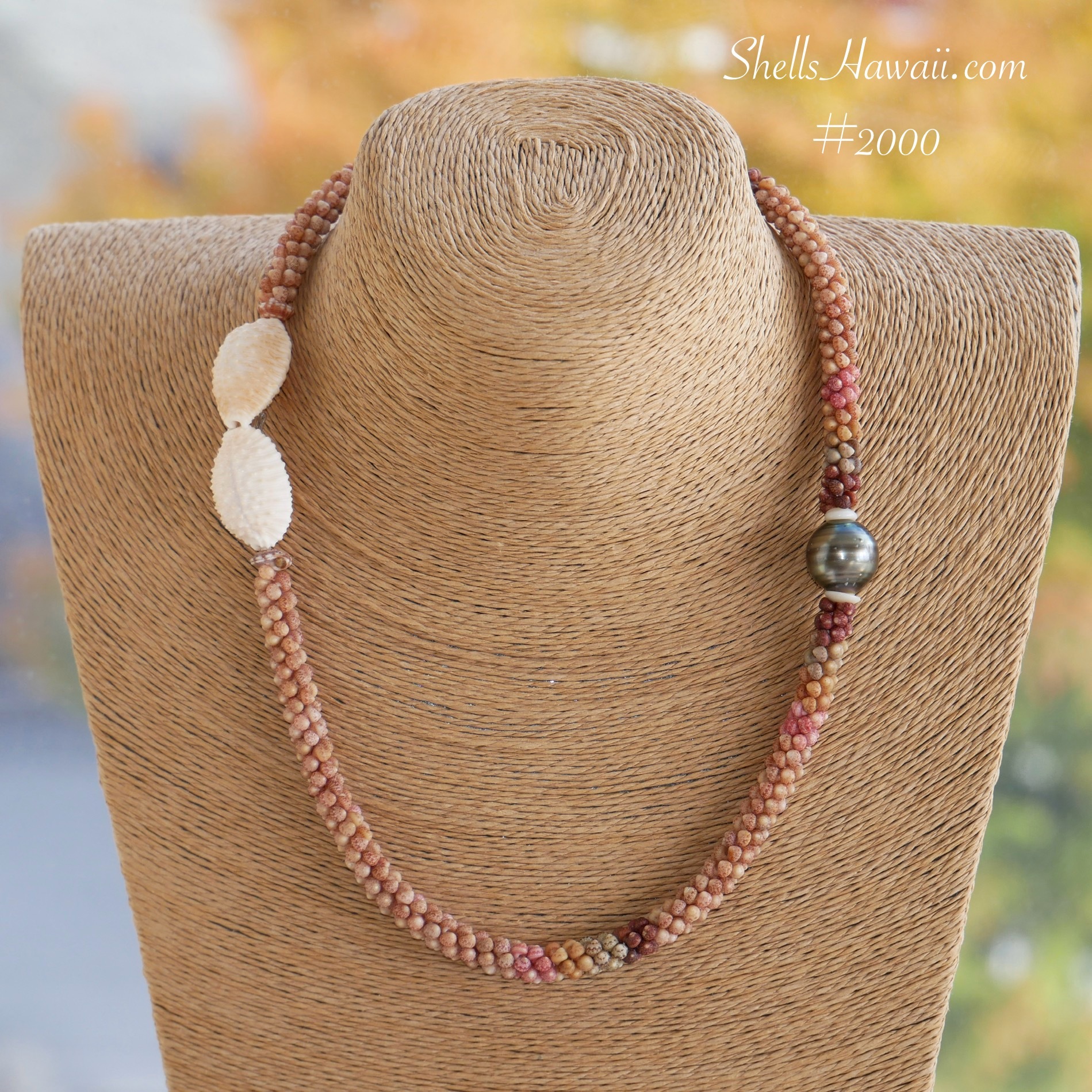
Thank you so much for reading. I truly appreciate you being here and sharing this journey with me. If you’d like to send me a note or share your thoughts, I’d love to hear from you — you can message me [here]. ❤️
 USD
USD

